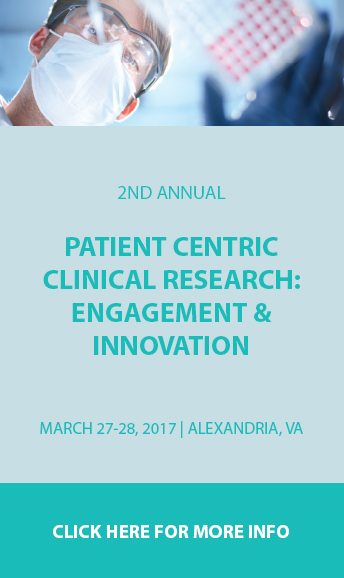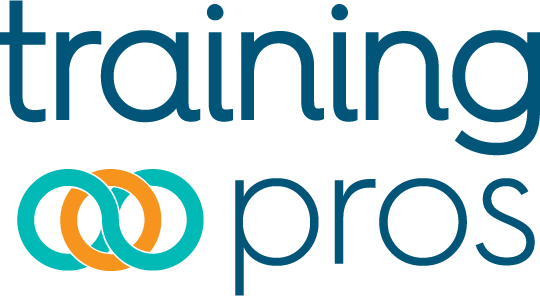Best Practices to Keep Patients Engaged Throughout a Clinical Trial
What Industry Leaders Are DoingBest Practices to Keep Patients Engaged Throughout a Clinical Trial
What Industry Leaders Are Doing
Patient centricity is an evolving concept within the healthcare industry and signifies a need to create stronger relationships with patients. Leading pharmaceutical and biotechnology companies have recognized that through collaborative relationships with patients, they can enroll patients into clinical studies faster, have quick and accurate feedback on products, as well as have a far higher level of adherence to the clinical protocol, which ensures that the research collected is accurate and usable for analysis.
One of the primary challenges the industry faces is keeping patients engaged through the lifecycle of the trial. From trial design to follow up, what are the industry leaders doing to keep patients engaged? I sat down with some of the speakers at the 2nd Annual Patient Centricity Conference to ask them just that. These are my takeaways from conversations with Anne Cropp, the Vice President and Head of Clinical Excellence at Pfizer; Beth Zaharoff, the Director of Patient-Focused Drug Development at Tesaro; and Jean McCoy, the Senior Vice President of Strategy and Innovation at Health Advocacy Strategies.
“Talking to patients directly can benefit clinical trial design because investigators may think about issues in a new way based on what patients are telling them.”
Clinicians often have their first interaction with patients while explaining the trial protocol. This is an opportunity to make sure the informed consent is clear and not overwhelming. Best practice suggests the overview is a one-page schedule of activities, assessments, and visits. When a patient has a clear understanding of what they are committing to, it will help to ensure they are engaged throughout the whole process.
For example, if a patient is in a trial that is fifty weeks long, and they are meeting with their physician for the first time, that physician should walk them through a protocol with a one-page visual description of the clinical trial. Some of the discussion points on the overview document should include: how much time each of the visits is likely to take, what the frequency of visits are, and what would be expected of the individual at each of those visits. Having that clear conversation early on between the physician investigator, co-investigator or a nurse coordinator will make the actual consent time much simpler.
“A thirty-page informed consent document describing the clinical trial is not an optimal approach to engage in meaningful conversation. We have found that the initial conversation should be much more transparent and simplified. Placing all of the information on a single visual document will help the trial participant understand what is expected during the clinical trial. This will also lead to greater engagement throughout the trial,” explained Anne Cropp.
Anne Cropp used this example, ““When I developed a pediatric hypertension program, I had age groups down to age six… We created a computerized module that explained the protocol to the youngest individual participating in the program. Companies can go to great lengths to make the protocol and the clinical trial clear and transparent to even the youngest individual participating.”
Create A Multi-Stakeholder Collaboration
While the trial design is driven by sound scientific and regulatory requirements, there is some flexibility on the procedures and assessments that need to occur for the data to be gathered. Patient information and advocacy groups can help identify how visits can be best structured and optimized. For example, arthritis patients can practically determine if the number of assessments lined up seems practical. A patient group can bring perspectives and insights that the investigators are not aware of because they’re living with the disease.
“If we can identify early on, before the protocol or the trial development phase, how to make it easier for the patient to be compliant with the clinical trial requirements, we can ensure that participation in the trial isn’t a hardship for them. This type of information can be best understood through early conversations with patient groups,” Anne Cropp explained.
Patient advisory boards can clarify what aspects of their disease is most important to treat. For example, if a protocol includes speed of onset as an endpoint in a trial, but a patient advisory board says that isn’t as important to them as convenience, the protocol endpoints can be changed to match the priorities of the patients, making it more meaningful. “Talking to patients directly can benefit clinical trial design because investigators may think about issues in a new way based on what patients are telling them,” explained Jean McCoy.
Another way to gather feedback over time is through a patient counsel, which brings together a group of patients on an ongoing basis so you have ongoing communication. “You can keep going back to ask more questions, learning more and gaining insights each time,” Jean McCoy said.
Patients and outside organizations aren’t the only resources available for establishing a multi-stakeholder collaboration. “Having the support of a pharmaceutical company’s senior leadership is the first step in making it possible to involve patients and advocacy organizations in the drug development process,” explained Beth Zaharoff.
Getting internal support and involving patients and advocacy organizations are all extremely important. What that looks like for every organization may vary. Beth Zaharoff explained how her company dove head first into the patient focus pool. “We did a pilot using one of our protocols in development. We sought feedback on several sections of the protocol from a group of patients and advocates. Our clinical team was involved throughout the process – seriously and thoughtfully analyzing the feedback and determining where protocol changes could be made. The experience was quite positive and we will be repeating the process for other trials in development.”
Keep the Patients Informed After the Trial
Patients crave two-way communication, and they really want clinical trial results in patient-friendly language after the trial is completed. “As an industry, we have not done a great job with this. This is something that we help companies do – taking their clinical trial reports and adapting them to patient-friendly language to help patients understand the results and why their participation matters,” stated Jean McCoy.
“One of the things we learned from patients is that they rarely hear anything about the trial during their participation or after the fact,” explained Beth Zaharoff. “Newsletters or other forms of communication that keep the participant informed and make him/her feel appreciated are very helpful. These simple “check-ins” are a way to show study participants that they are important partners in the drug development process.” Keeping patients informed can be as simple as thanking them for their time and their participation in the trial.
In addition to treating patients as partners, conversing with patients after the clinical trial is over means building a relationship where they may be able to get involved in future trials, either for that product or others that the company might have in their pipeline. Many companies are beginning to form post-clinical trial closed communities where they can provide patients with information and keep them engaged.
Jean McCoy shared with me a survey conducted through their sister company, Health Stories Project – Insights (HSPi), that showed health consumers are very interested in providing feedback and having conversations about clinical research. HSPi asked three hundred patients if they think that the pharmaceutical industry should share more information with consumers about clinical research and clinical trials. Eighty-seven percent said yes. “And all of the respondents in this study had confirmed that they are familiar with a clinical trial,” McCoy clarified. “So, taking that into consideration, these results are significant.”
Some of the top ways patients would like to help out include providing feedback on clinical trial designs, recruitment methods and materials. This could include feedback on the number of study visits, required procedures, or end points.
In another HSPi survey Jean McCoy shared with me, patients specifically would like to see the trial information go out through a dedicated patient group website. If there’s an advocacy group that is dedicated to that disease, they’d like to see it on that website. They would also like to see trial information and updates on social media and in printed materials they could find in their physician’s office. This tells us that patients are really interested in getting more information about clinical trials and they want it through many different channels to maximize the opportunity of finding it.
In Summary
Patients want to and can help with clinical trials before, during and after. Companies that embrace their interest will benefit from improved two-way communication, reduced trial challenges, improved recruitment and participation and strong long-term relationships with patients.




